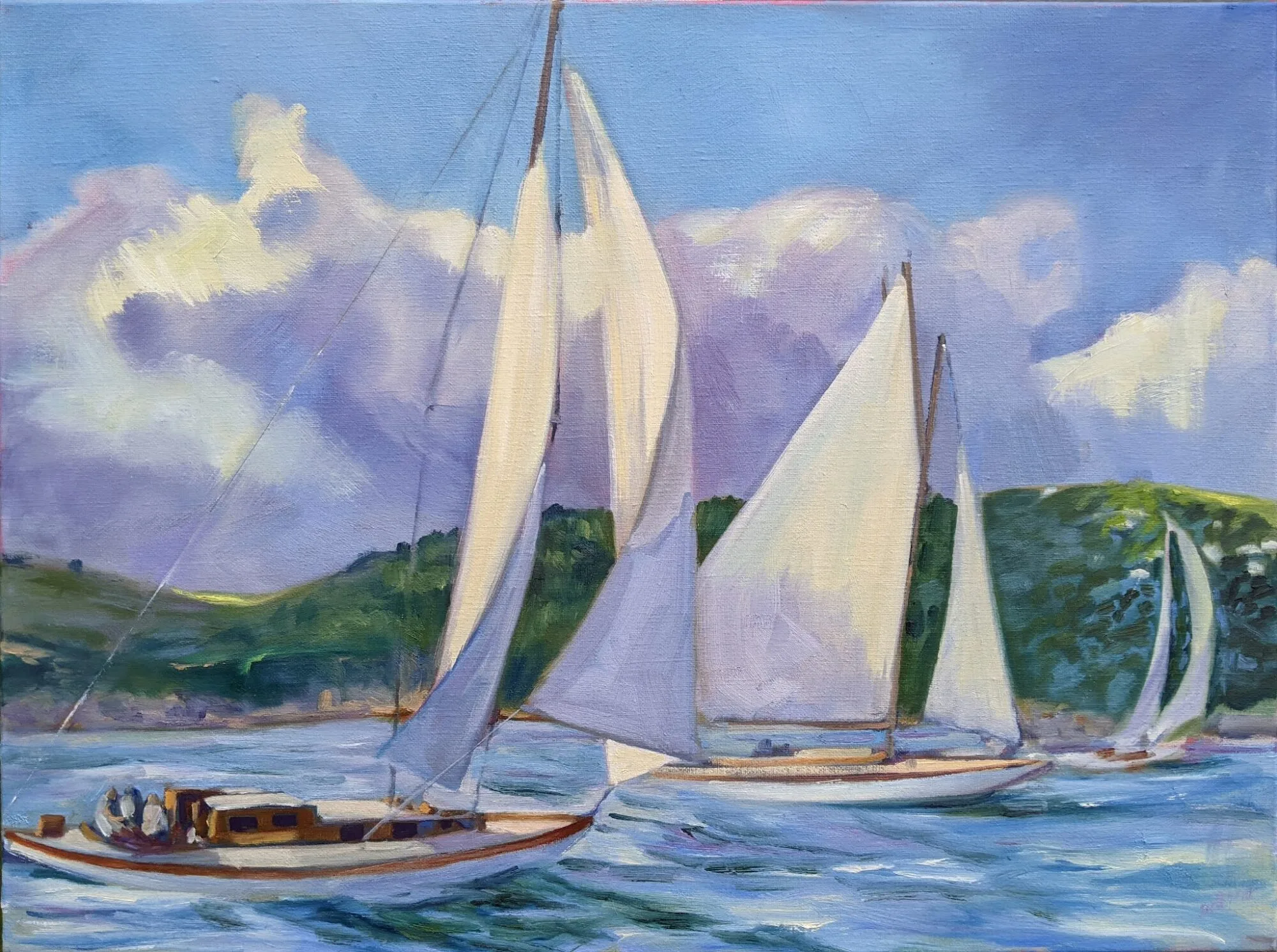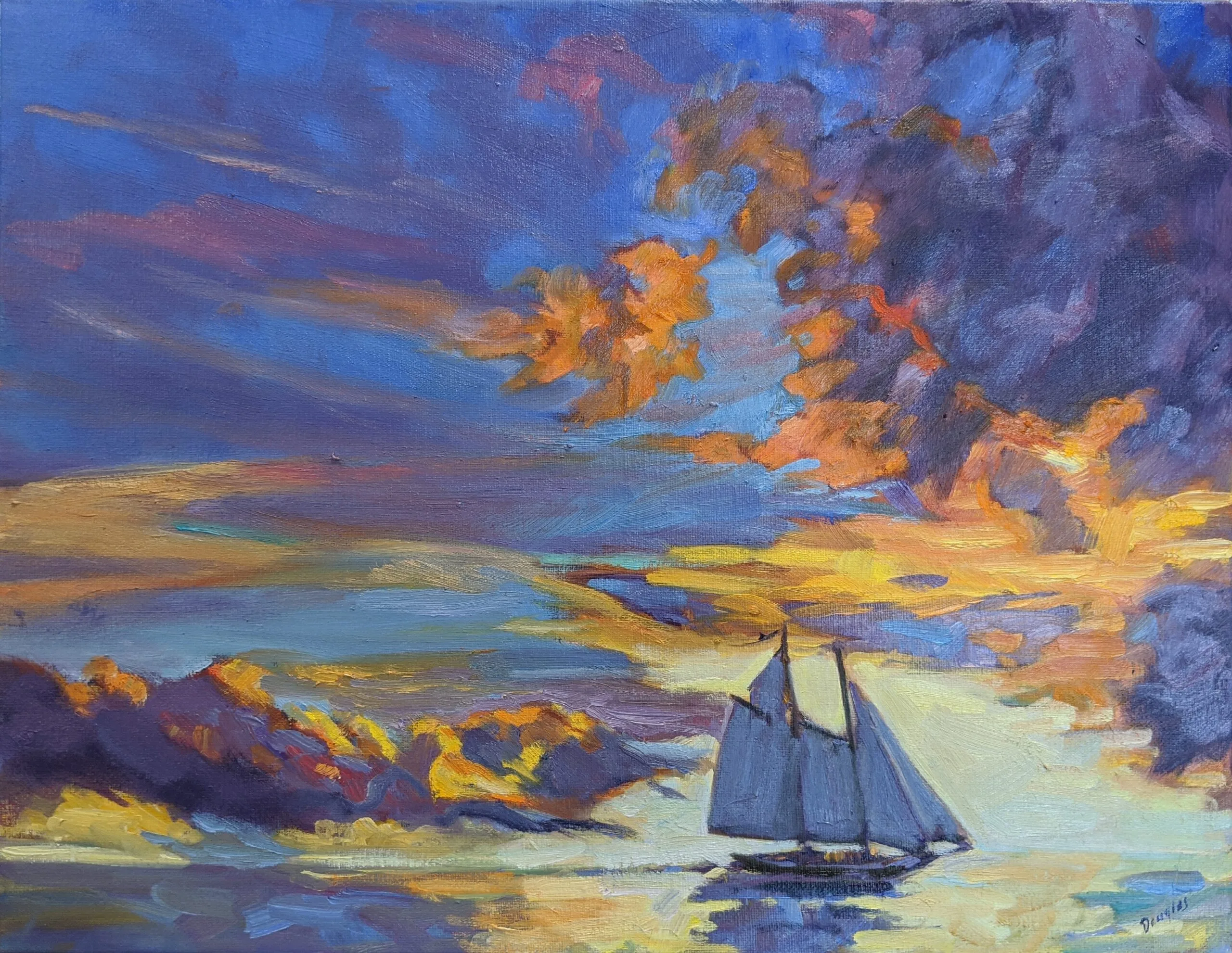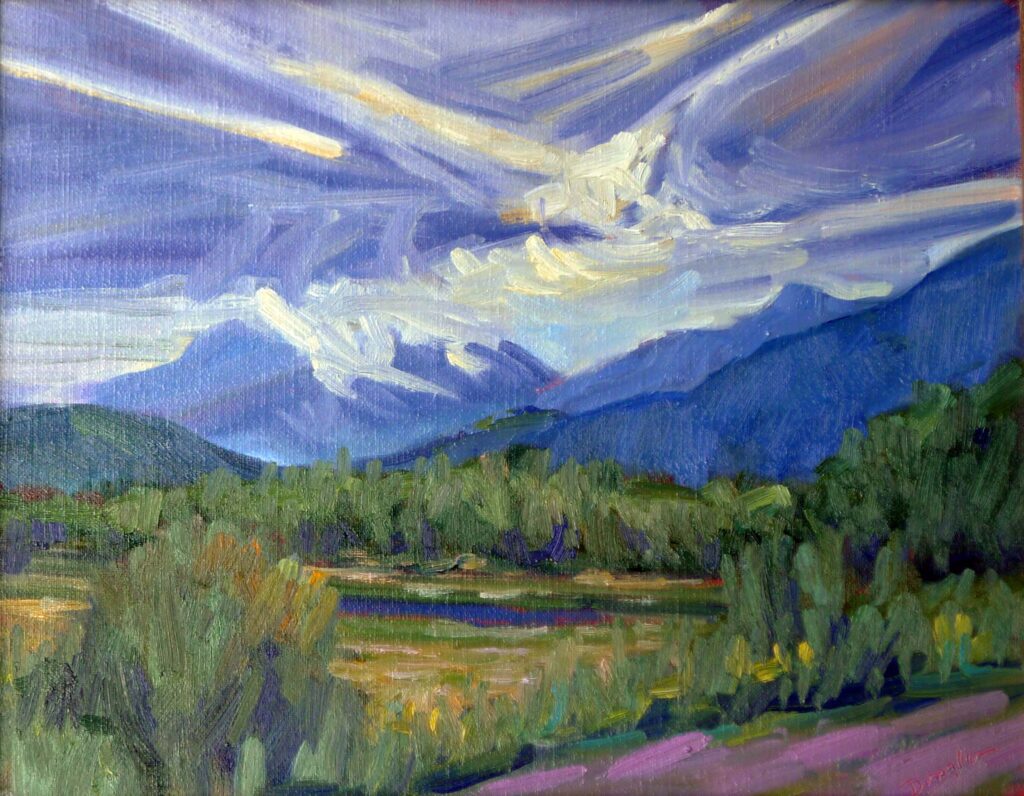Cloud painting trips up emerging artists more than any other element. To paint clouds properly, you must first draw them properly. Clouds are not are flat little cutouts, and rendering them like that marks a painting as amateurish. The same perspective rules that apply to objects on the ground also apply to objects in the air.
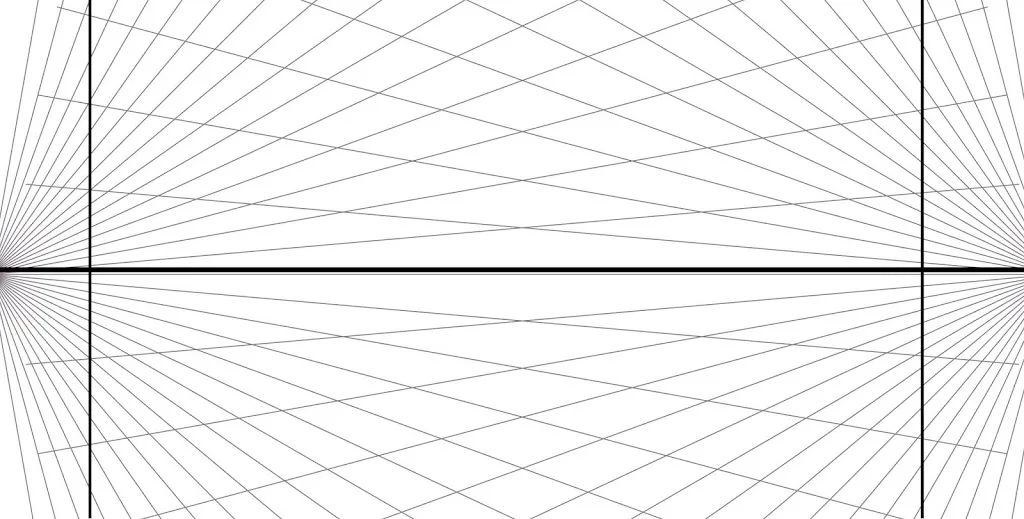
Clouds have volume
I’ve written before about two-point perspective. It’s a great theoretical concept but a lousy way to draw. However, understanding it is useful, especially in cloud painting.
Draw a horizontal line somewhere near the middle of your paper. This horizon line represents the height of your eyeballs. Put dots on the far left and far right ends of this line, at the very edges of your paper. These are your vanishing points.
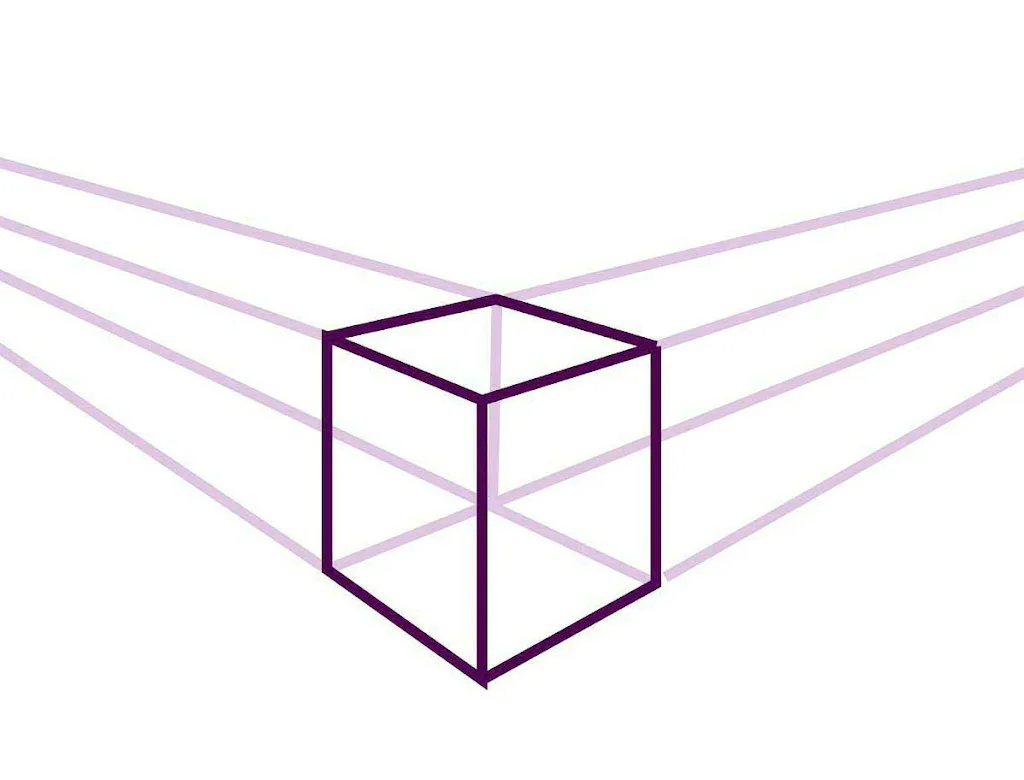
All objects in your drawing must be fitted to rays coming from those points. A cube is the simplest form of this. Start with a vertical line; that’s the front corner of your block. It can be anywhere on your picture. Bound it by extending ray lines back to the vanishing points. Make your first block transparent, just so you can see how the rays cross in the back. This is the fundamental building block of perspective drawing, and everything else derives from it. You can add architectural flourishes using the rules I gave for drawing windows and doors that fit.
As a practical tool, two-point perspective breaks down quickly. In reality, those vanishing points are infinitely distant from you. But it’s hard to align a ruler to an infinitely-distant point, so we draw finite points at the edges of our paper. They throw the whole drawing into a fake exaggeration of perspective. That’s why I started with a grid where the vanishing points were off the paper. It doesn’t fix the problem, but it makes it less obvious.
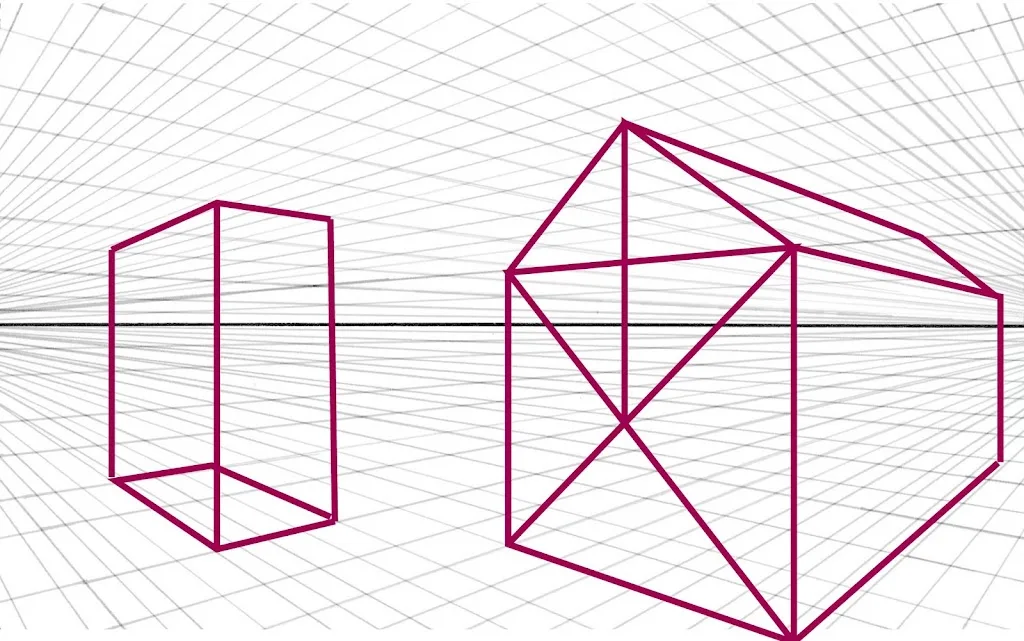
(There is also three-point perspective, which gives us an ant’s view of things. And there are even more complex perspective schemes. At that point, you’ve left cloud painting and entered a fantastical world of technical drawing.)
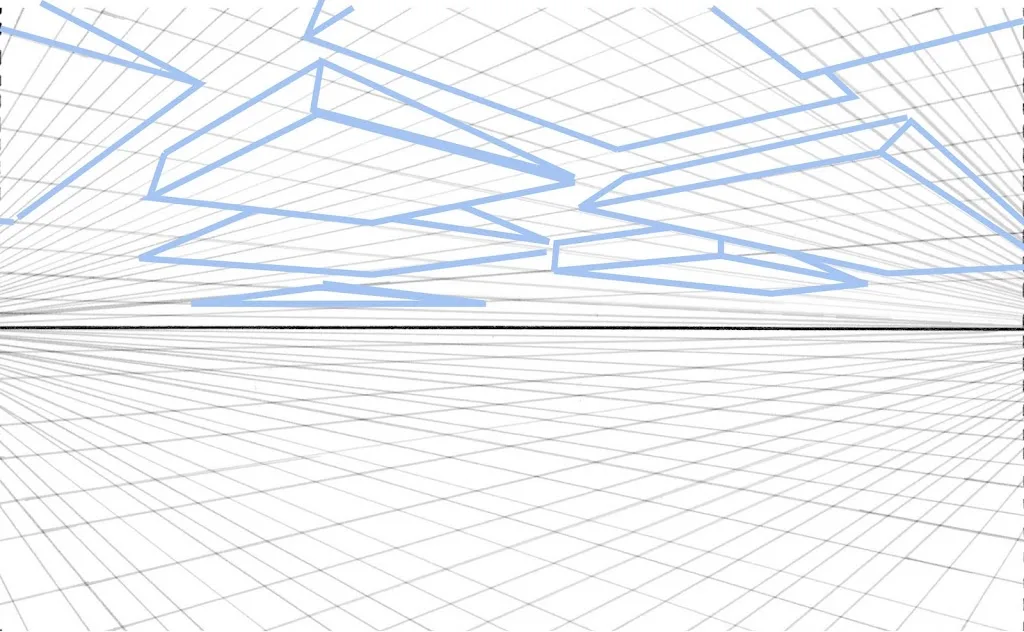
Clouds follow the rules of two-point perspective, being smaller, flatter and less distinct the farther they are from the viewer. The flattest part of cloud paintings is at the bottom of the sky. All you see of clouds directly overhead is their bottoms. In between is a steady shift from side view to bottom view.
A flight of cumulus clouds or a mackerel sky is always at the same altitude. That means their bottoms are on the same plane. That’s because clouds form where the temperature changes.
We paint cumulus clouds because they’re ubiquitous and lovely. Luckily, they form up in consistent patterns, with flat bases and fluffy tops. I’ve rendered them here as slabs, using the same basic perspective rules as I would for a house. In reality, their bases aren’t square and their tops are far puffier. This is just so you see how they’re distributed in the sky.
When cumulus clouds start piling up into thunderheads, they appear to violate this rule of perspective, but that’s just because of their vast size.
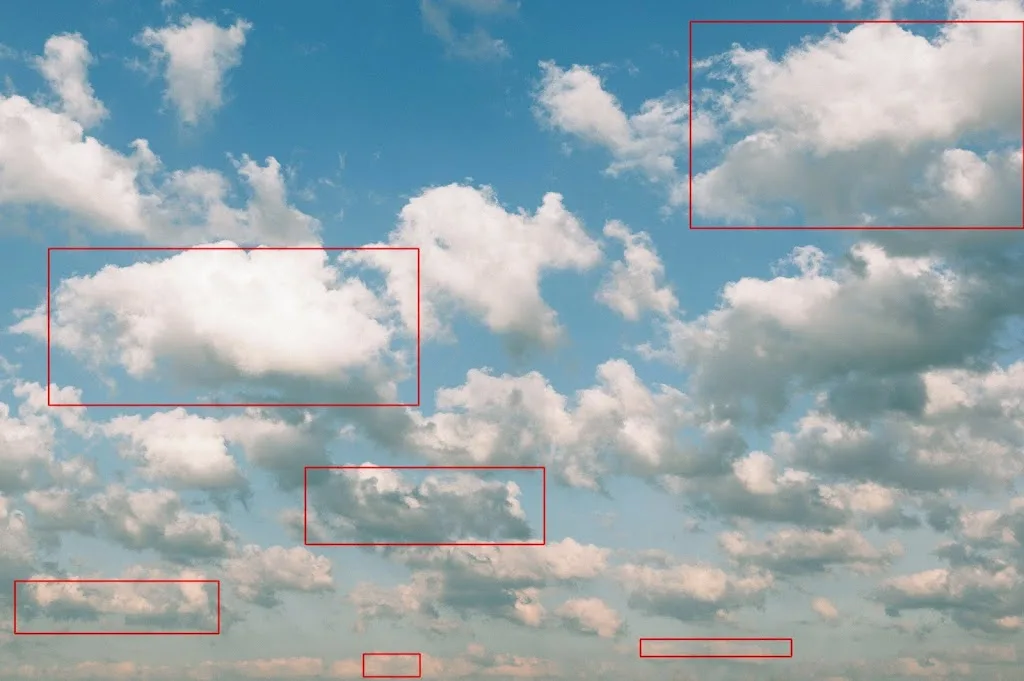
I don’t want you to go outside and paint clouds with a perspective grid. This is just for understanding the concept before you tackle the subject. Then you’ll be more likely to see clouds marching across the sky, rather than pasting puffy white shapes on the surface of your painting.
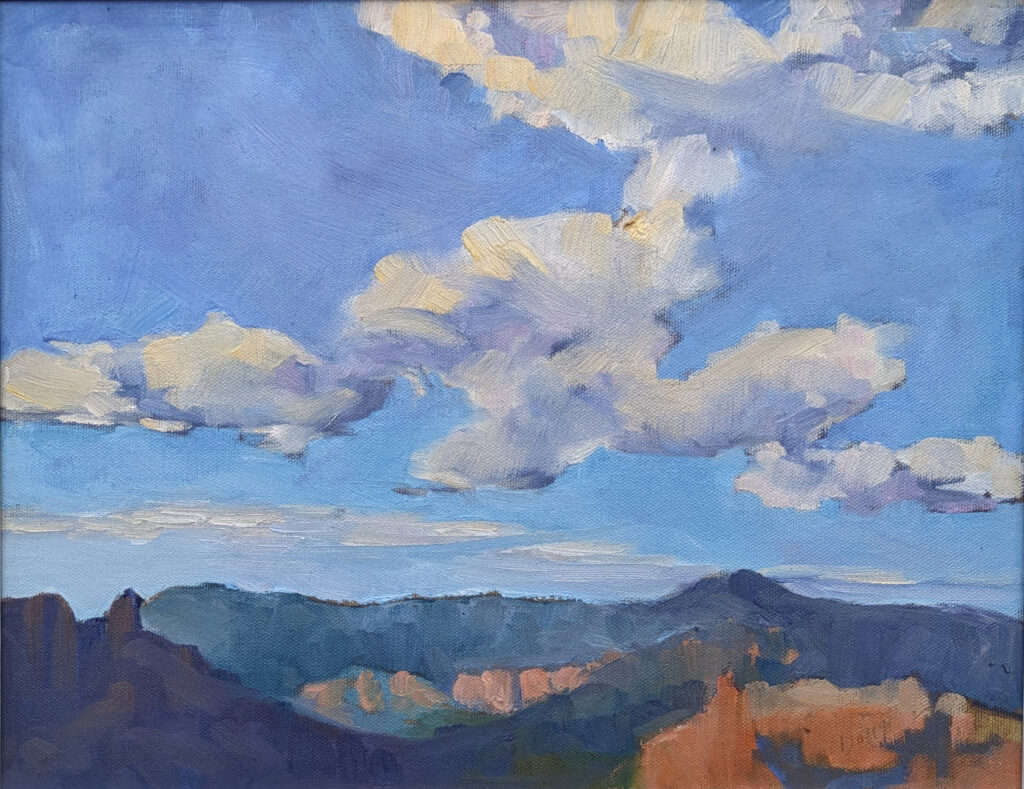
Painting starts with drawing
In order to paint, you must first learn to draw. Sometimes people point to abstraction to argue otherwise, but simplification actually requires top-notch drawing chops.
That’s why I’m teaching a drawing class on Monday evenings starting a week from today. This class is always a hard sell because people think drawing is ‘hard’ or ‘boring.’ Nothing is farther from the truth. If you’re trying to be a better painter, start by refining your drawing skills.
Reserve your spot now for a workshop in 2025:
- Advanced Plein Air Painting, Rockport, ME, July 7-11, 2025.
- Sea and Sky at Acadia National Park, August 3-8, 2025.
- Find Your Authentic Voice in Plein Air, Berkshires, MA, August 11-15, 2025.
- Immersive In-Person Fall Workshop, Rockport, ME, October 6-10, 2025.
